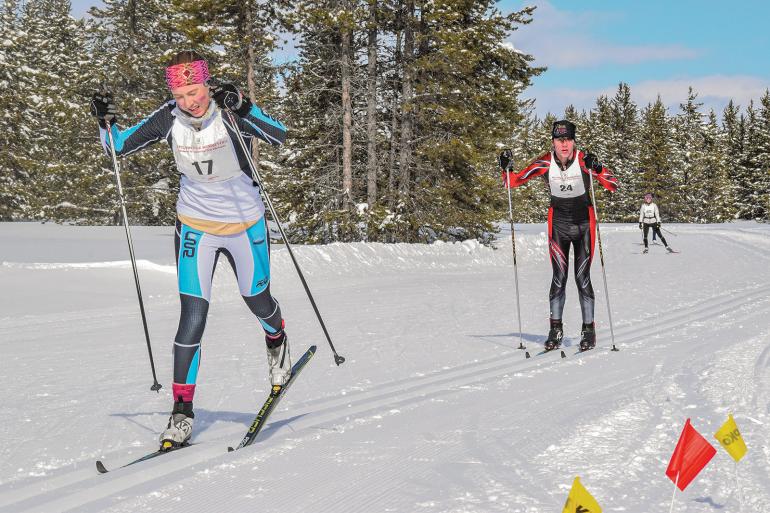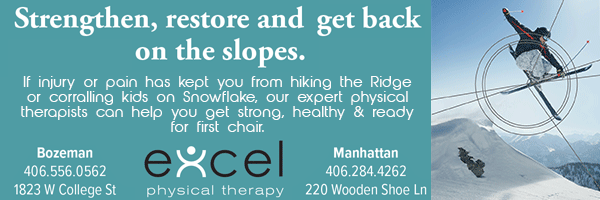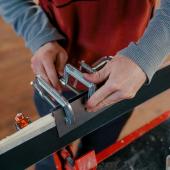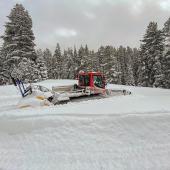Hittin’ Your Stride
Tips for a strong Nordic season.
Bozeman’s Nordic skiers don’t waste time in winter. Think about it: by late December, you’ve likely gotten out for a handful of groomer days, and you probably have a few off-trail sessions under your belt, too. However, as the season progresses, maintaining strength, managing ski volumes, and avoiding injuries become critical. Whether you’re prepping for a big event like the Rendezvous in West Yellowstone, or just wanting to finish the season healthy and strong, now is the time to balance on-ski training with strength and recovery routines. Here are a handful of considerations to keep in mind.
As the season wears on, it’s essential to continue strength training to support the repetitive demands of skiing.
Pacing for the Long Haul
As the season progresses, it’s tempting to ramp up the intensity or increase mileage too quickly, especially as fitness improves. But remember, no one wants to see a Strava graph that looks like a vertical cliff—steep, unsustainable, and likely leading to a crash. Maintaining a gradual and strategic build-up of your skiing volume will ensure you stay injury-free and perform well throughout the season. Keeping track of your weekly hours on skis, and alternating high-intensity days with recovery days, will help you avoid overuse injuries and fatigue as you push toward your goals.
Maintain Muscle Power
As the season wears on, it’s essential to continue strength training to support the repetitive demands of skiing. Blending high-force compound movements (e.g., squats and deadlifts) with more isolated exercises targeting specific muscles (such as knee extensions, hip abduction, and external rotation) will keep your body balanced. These movements help ensure you’re not just strong, but strong in the right places, preventing muscle imbalances that can lead to overuse injuries.
Don’t Forget Mobility
Mobility work remains a key factor in keeping your skiing smooth and efficient. Focus on improving hip extension, hip rotation, and thoracic spine mobility to allow for optimal technique and prevent stiffness from repetitive skiing movements. Consistent attention to these areas will help you maintain a fluid, effective range of motion throughout the season.
Focus on improving hip extension, hip rotation, and thoracic spine mobility to allow for optimal technique and prevent stiffness from repetitive skiing movements.
Staying Ahead of Overuse Injuries
Mid-season is prime time for overuse injuries like tendonitis, lower back pain, or knee pain. Prevent these common issues by incorporating recovery strategies into your routine. Foam rolling, massage, and post-ski mobility work all ensure your muscles are ready to go for subsequent sessions. Active recovery days—like gentle yoga or easy walks—are also essential for staying healthy and strong.
Prepping for Races or End-of-Season Events
If you’ve set your sights on an end-of-season race or big skiing goal, it’s important to have a structured taper. Gradually reduce your training load in the final weeks leading up to the race to give your body time to recover fully and peak on race day. Incorporate low-intensity sessions while focusing on technique to sharpen your performance without overwhelming your system.
As the cross-country ski season continues, it’s essential to find the right balance between volume, strength, and recovery—no matter how big or small your goals may be. By managing your ski training, maintaining in-season strength work, and focusing on both mobility and recovery, you’ll set yourself up for a strong end of the season. Whether you’re preparing for a race or just wanting to enjoy a few days on skis, staying mindful of your body’s needs will keep you healthy and performing at your best.
AJ Sobrilsky is a doctor of physical therapy (DPT) at Excel PT. He’s a board-certified orthopedic specialist who works with mountain athletes. When not working, he’s biking, climbing, trail running, and skiing with his wife around the Gallatin Valley.












